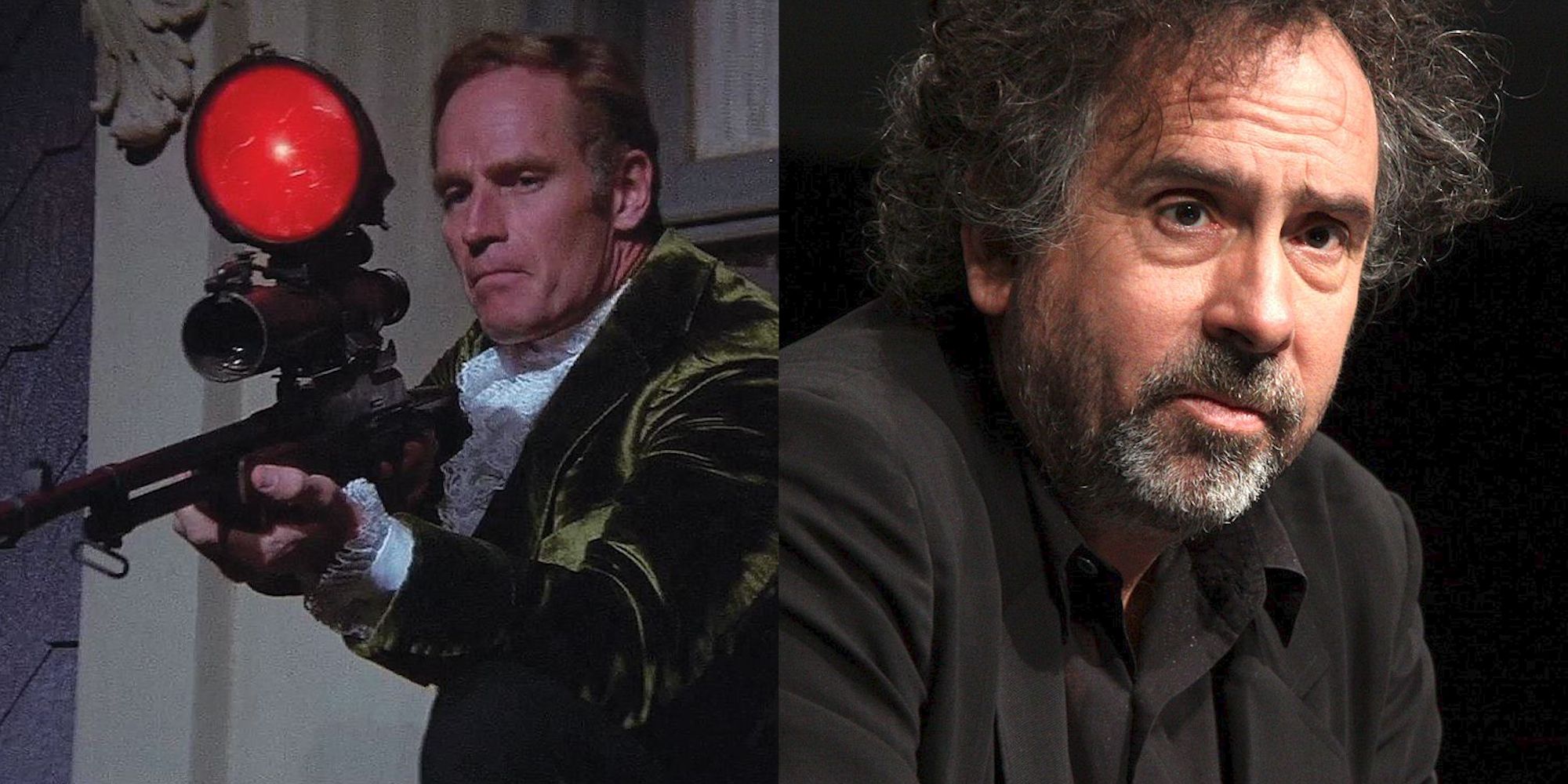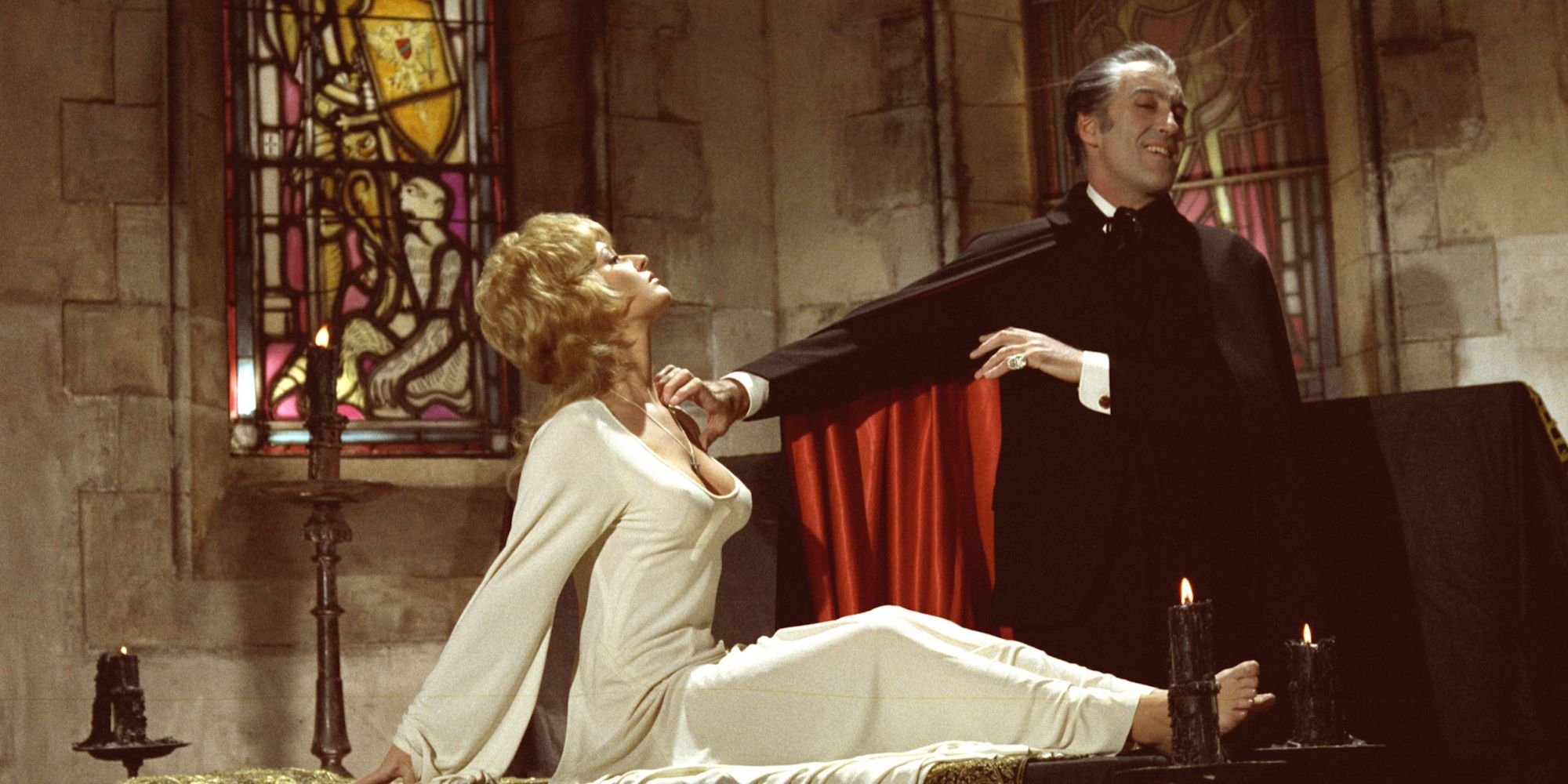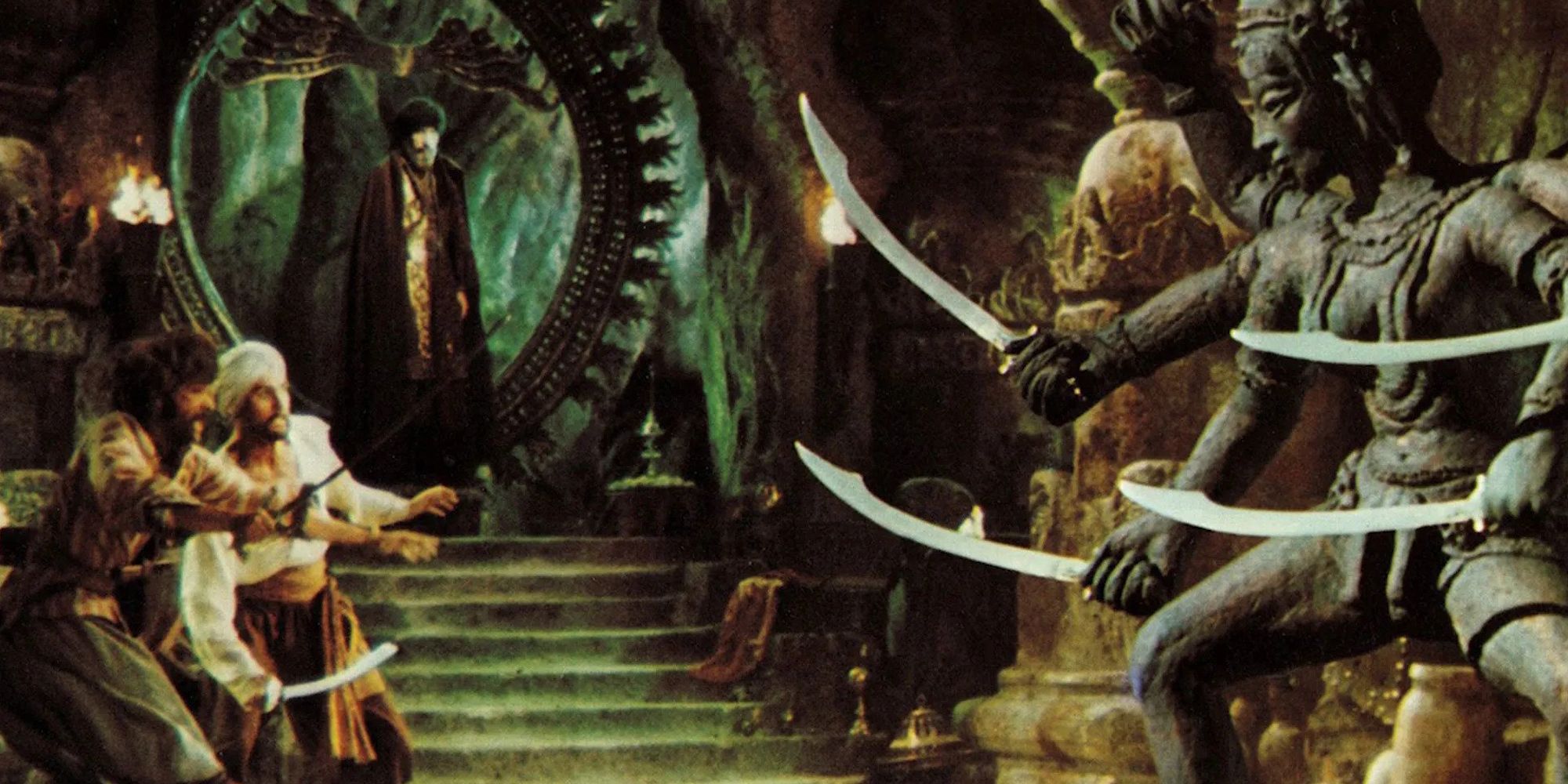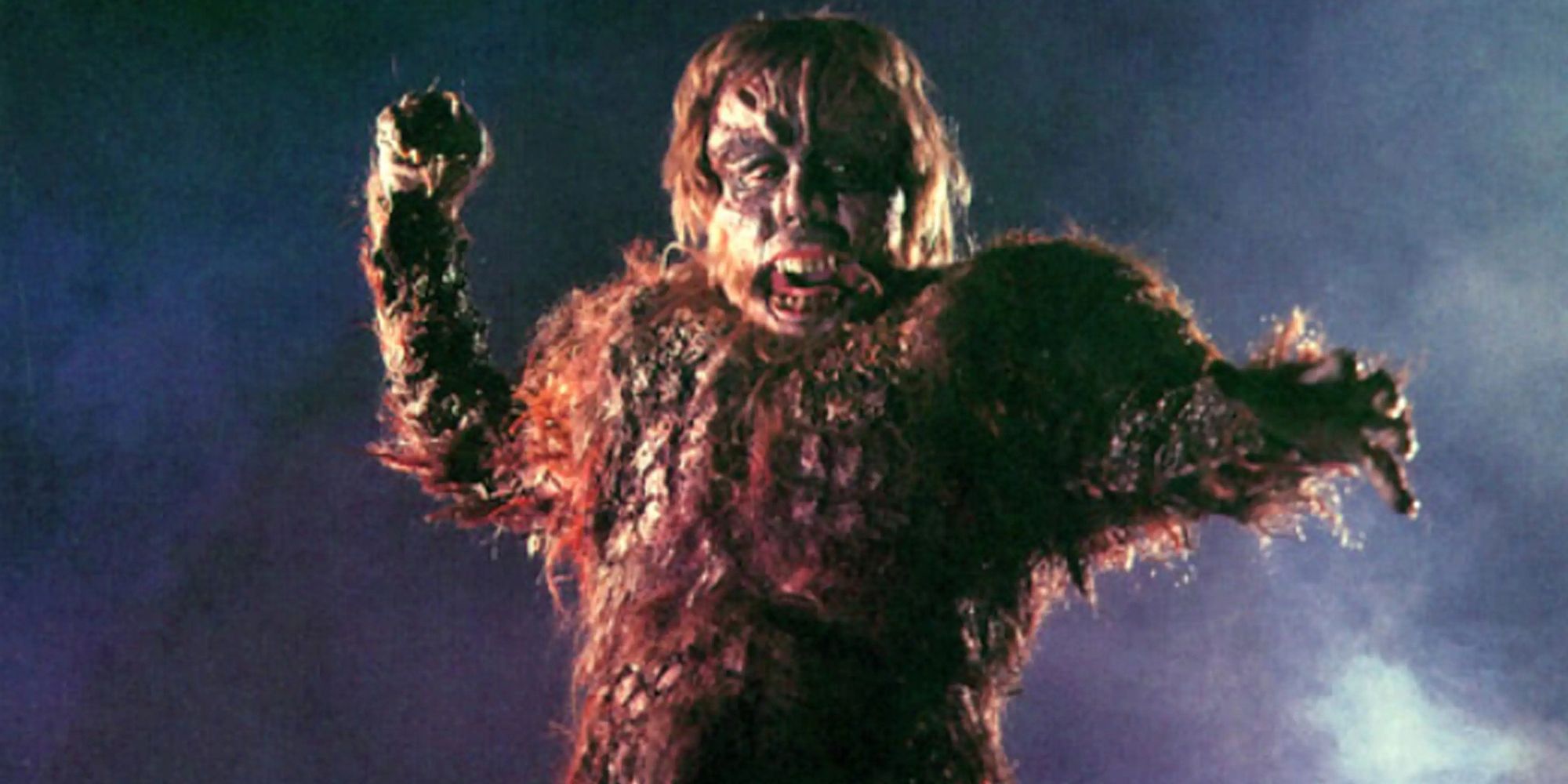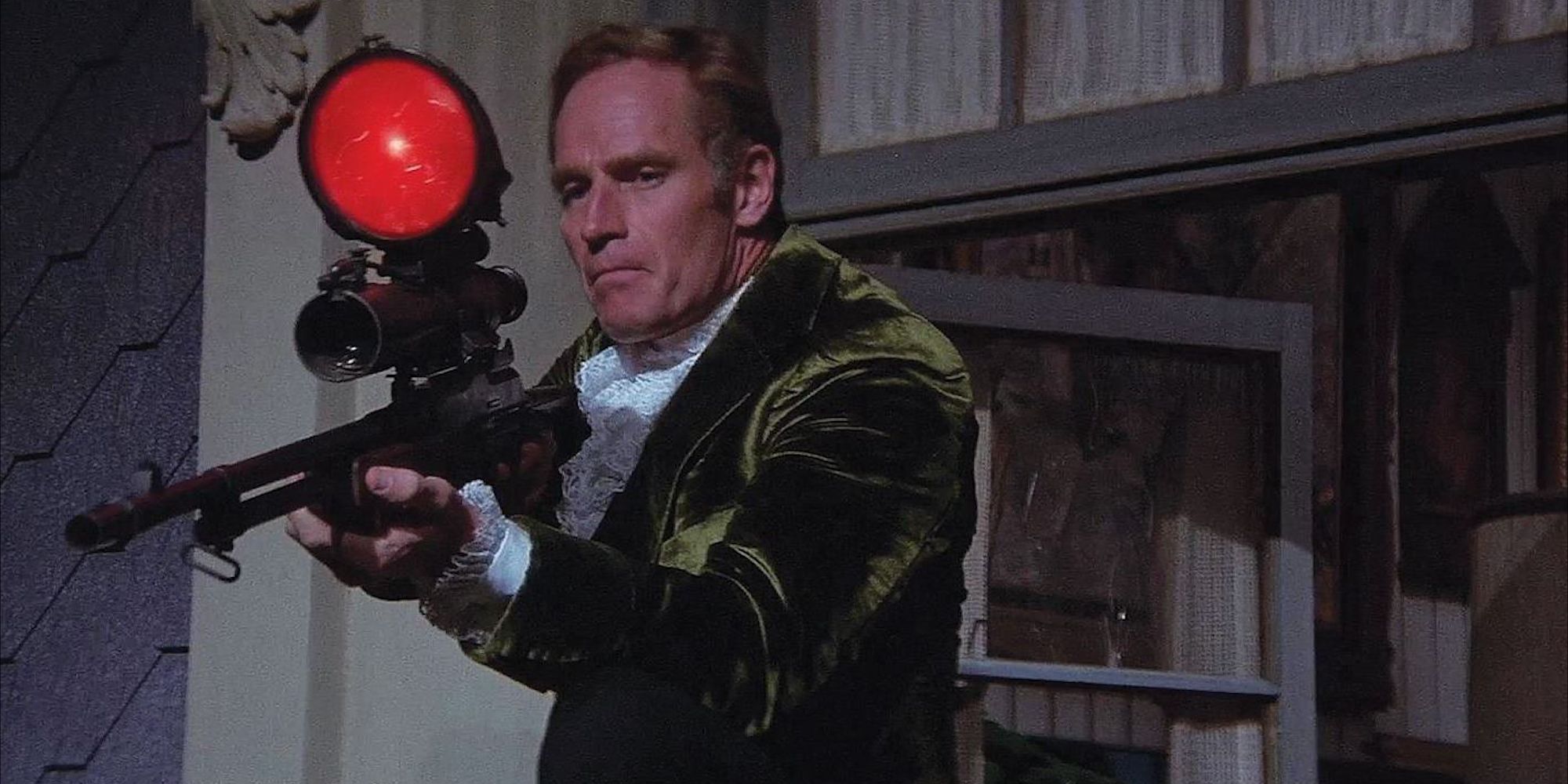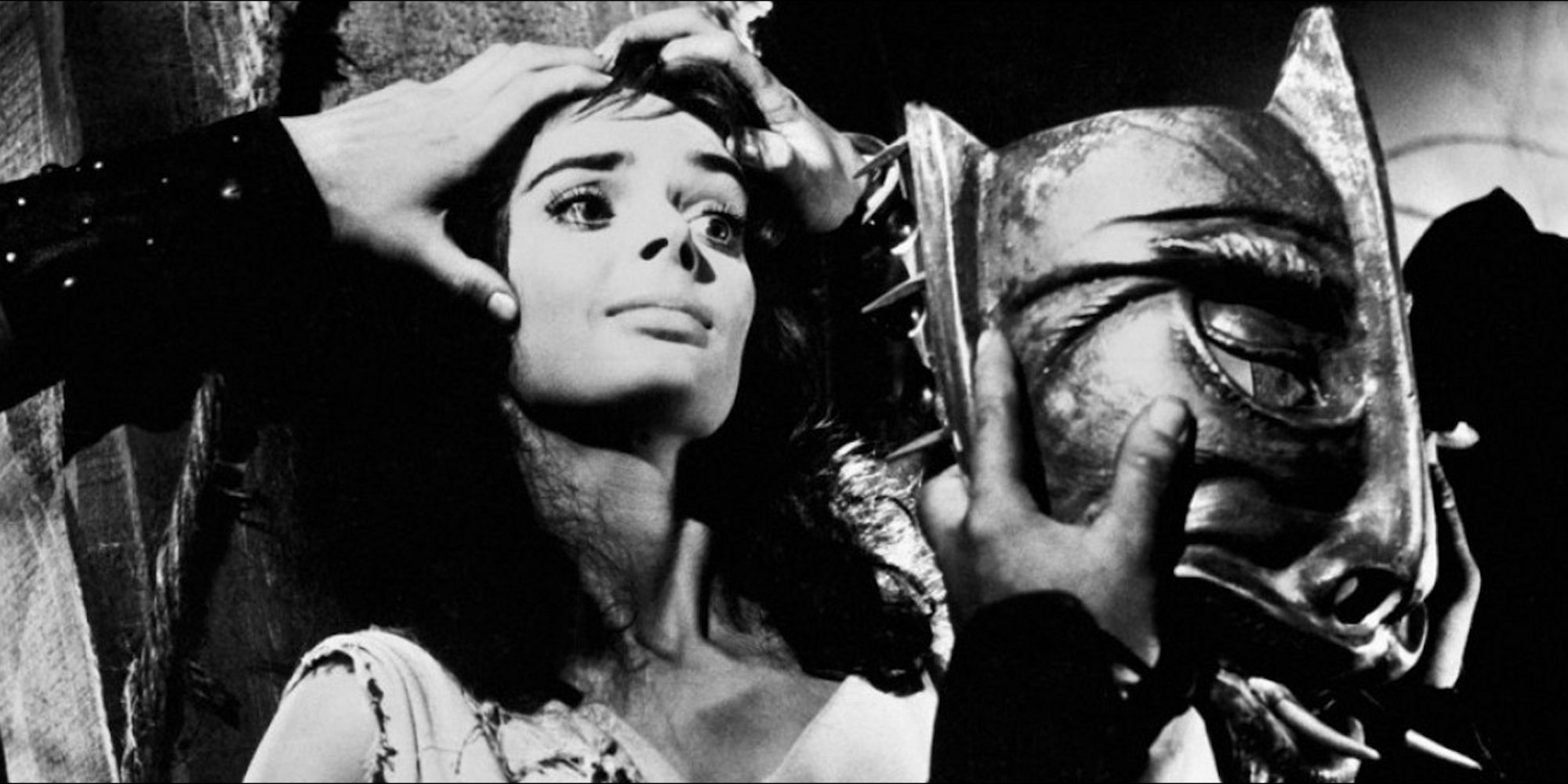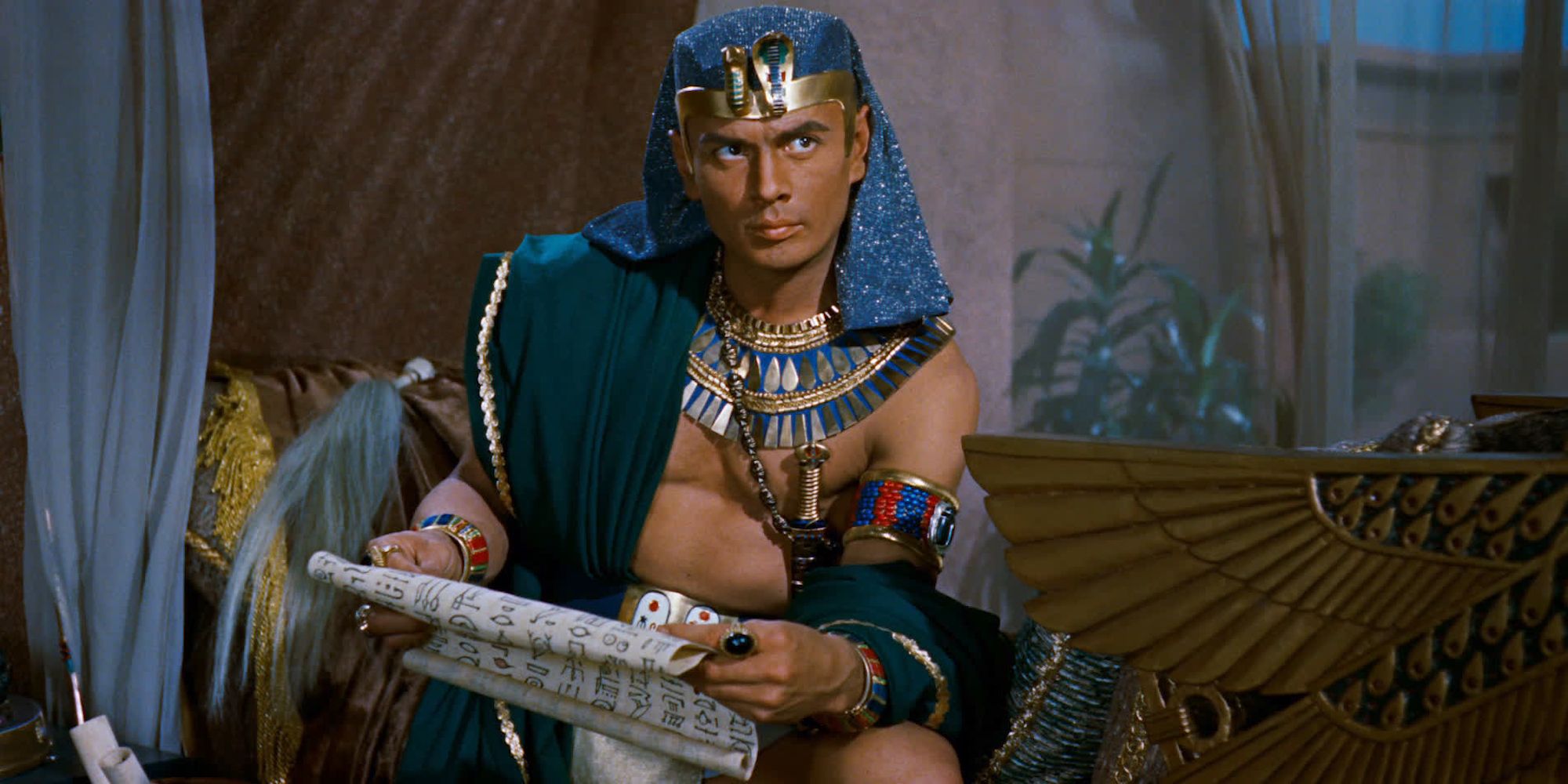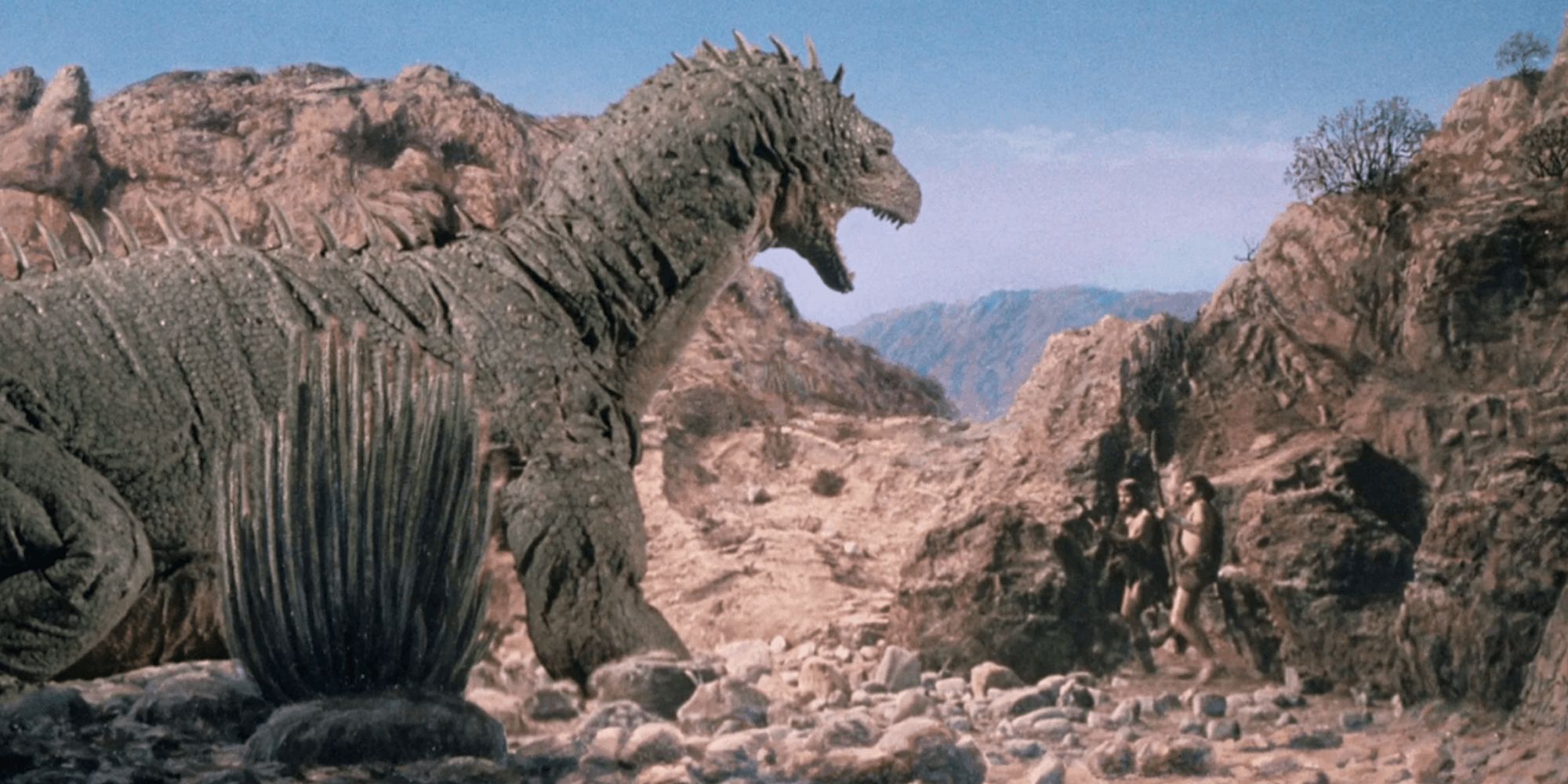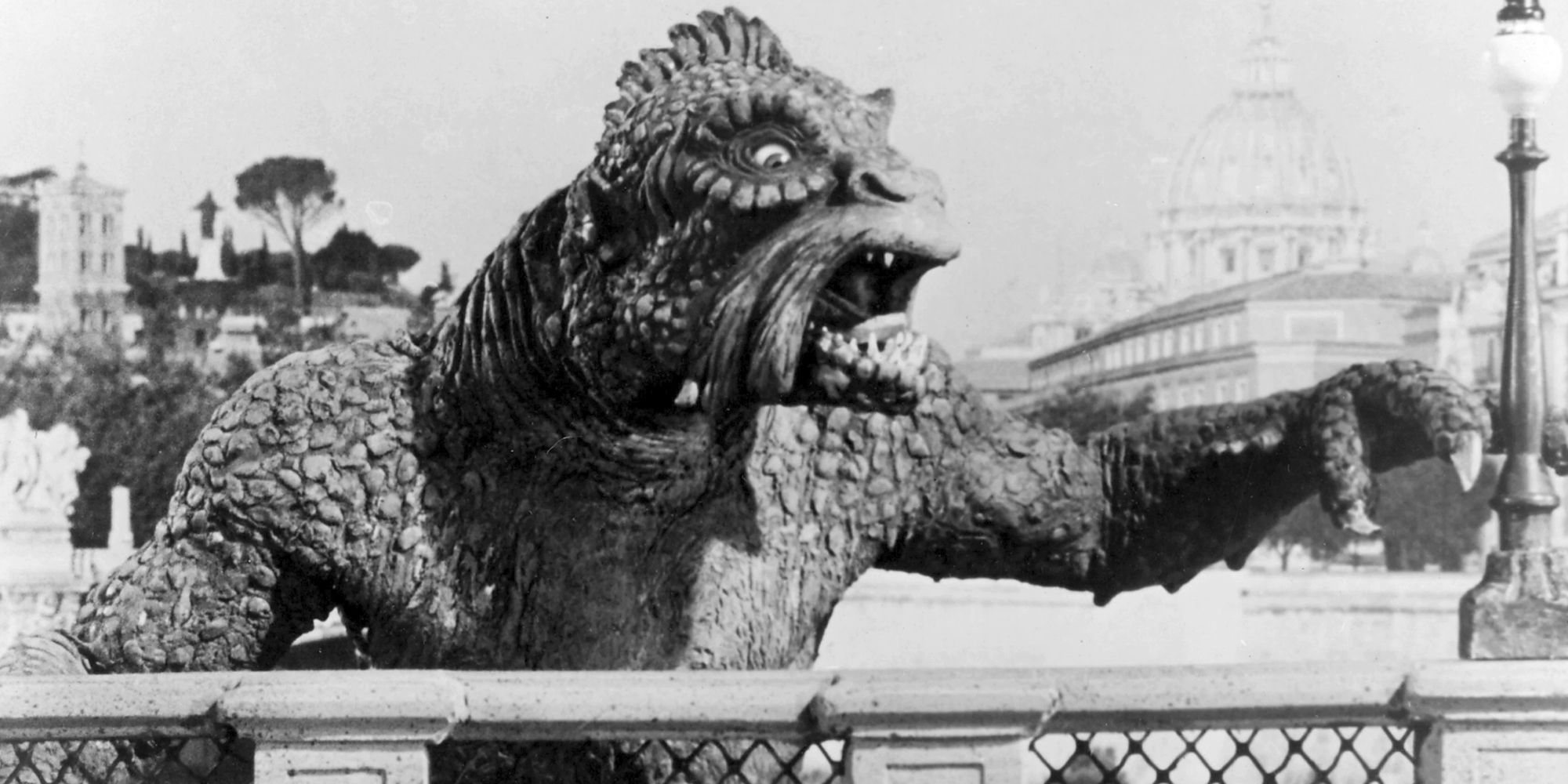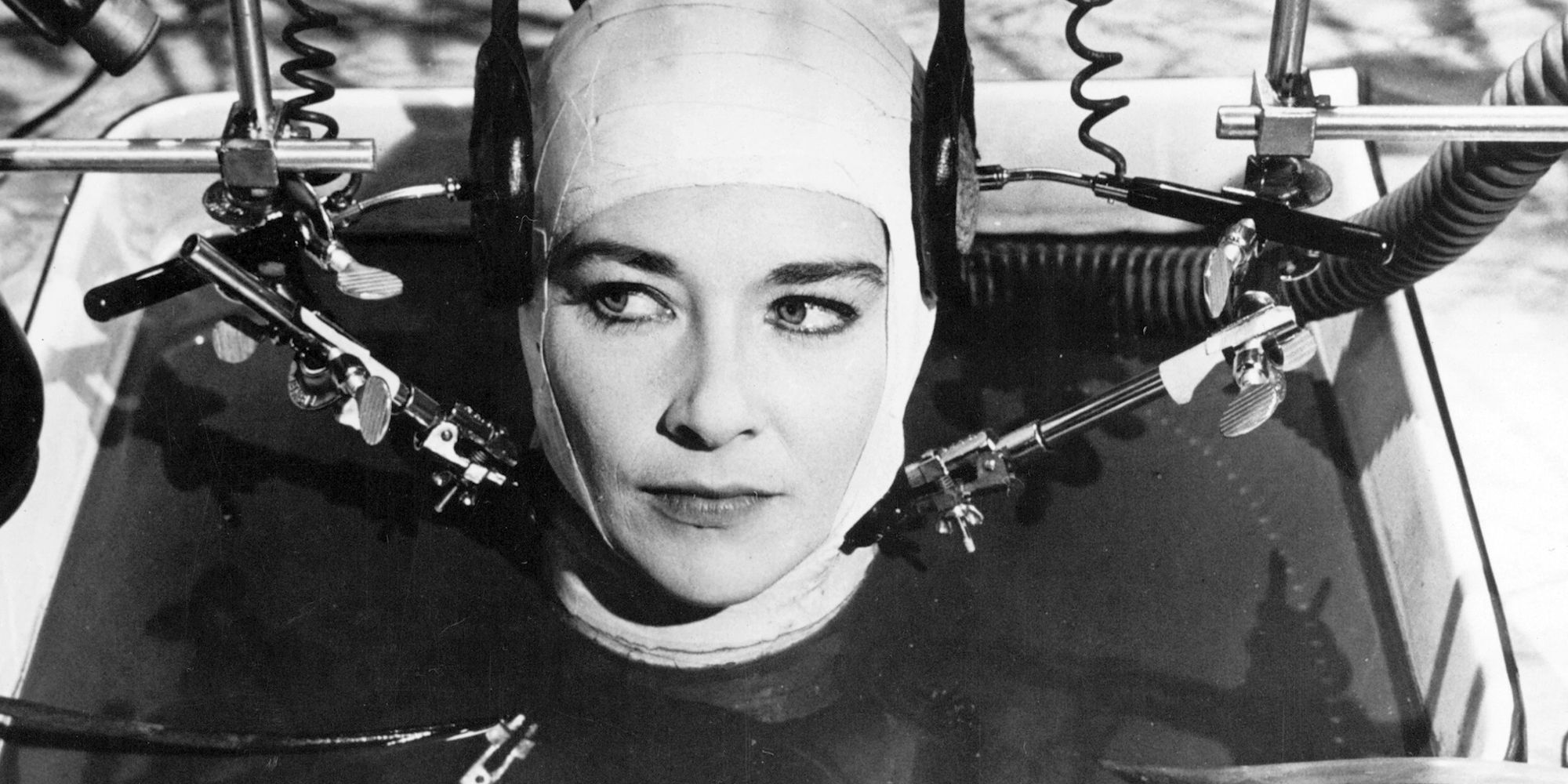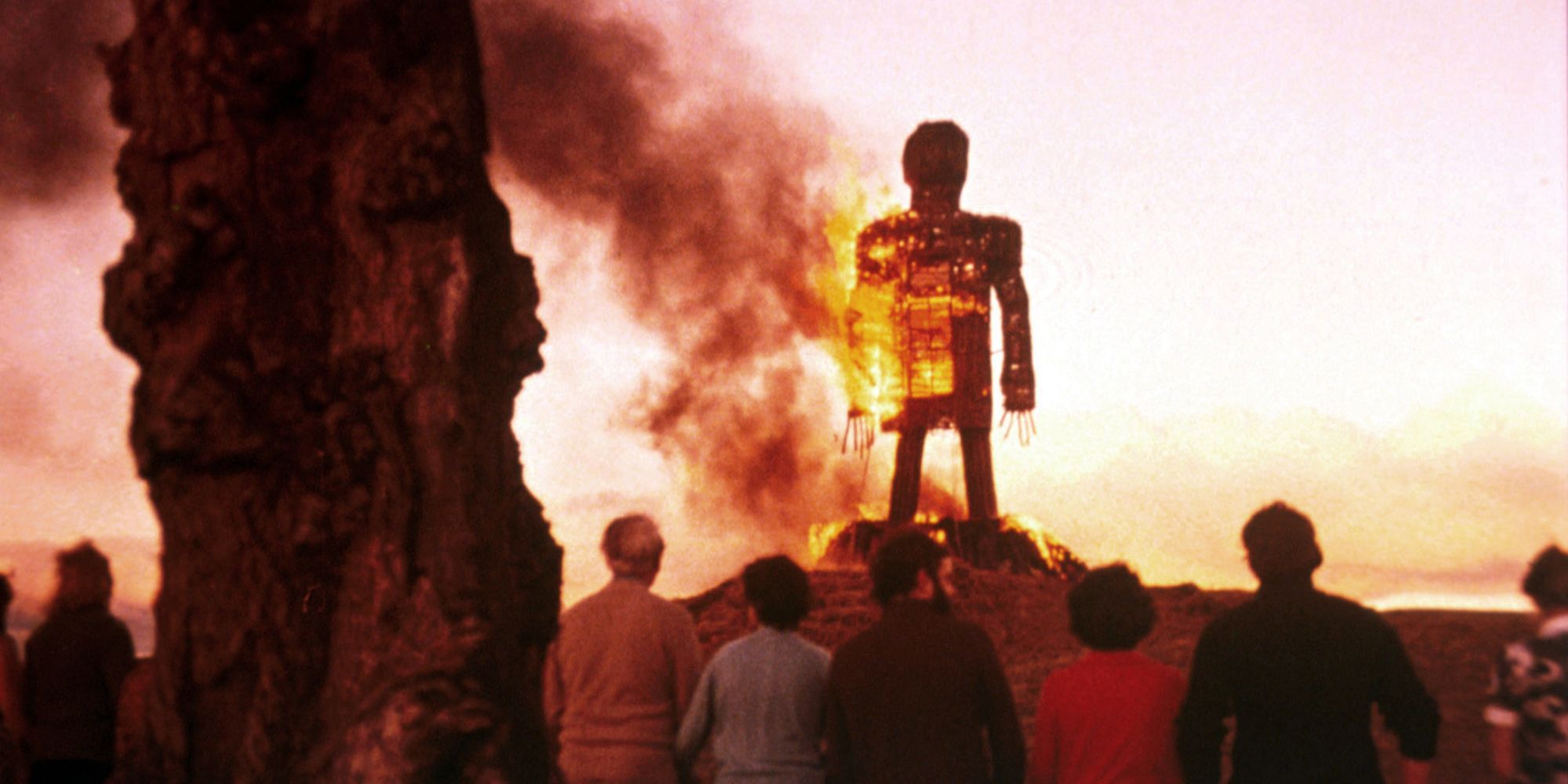Tim Burton is a master of the offbeat, a visionary director who finds the whimsical in the macabre. His movies usually put an endearing spin on horror tropes, like monsters, the undead, and freaks of all kinds. Not all of his projects are masterpieces, but his best movies - like Edward Scissorhands, The Nightmare Before Christmas, and Sweeney Todd - have a distinctive aesthetic and charming gothic sensibility.
Like most great directors, Burton is also an avid film fan. Over the years, he has spoken a lot about the movies that shaped him most. He has recommended a ton of films, many of which share his grim yet humorous style. Odds are, Burton's fans will find a few gems to enjoy among his recommendations.
1 'Dracula A.D 1972' (1972)
Dracula A.D 1972 is a Hammer horror directed by Alan Gibson that sees the iconic bloodsucker, played by Christopher Lee, resurrected in the 20th century by a group of young Satanists. Peter Cushing portrays Professor Van Helsing, who tries to stop Dracula's evil plan. "I grew up with [Lee's] Hammer horror films [...] like Dracula A.D. 1972," Burton has said. "I love that movie!"
The film has a distinctly 1970s vibe, with groovy music and fashion, making it a unique addition to the Dracula canon. Dracula A.D 1972 may not be the most well-known Dracula movie, but it certainly has its own cult following amongst horror enthusiasts who appreciate its campy charm and nostalgia value.
2 'The Golden Voyage of Sinbad' (1973)
The Golden Voyage of Sinbad is an adventure-fantasy film directed by Gordon Hessler, with special effects by the legendary Ray Harryhausen. John Phillip Law stars as the fabled sailor who embarks on a perilous journey to find a magical golden tablet that can grant immense power to its possessor. Along the way, Sinbad encounters several obstacles and adversaries, including a one-eyed centaur and a sinister sorcerer played by Tom Baker.
Burton has cited Harryhausen as a major inspiration behind his own decision to use stop-motion in some of his films. "[Harryhausen's work] is kind of like Frankenstein or Pinocchio," Burton has said. "It's taking an inanimate object and having it come to life [...] That's why I still like to do stop-motion projects because it's just really exciting and it energizes not only you but the other artists working on it."
3 'The War of the Gargantuas' (1966)
The War of the Gargantuas is a kaiju film directed by Ishirō Honda. It centers on two giant humanoid creatures known as Gargantuas, one brown and one green, who wreak havoc on Tokyo as they battle each other. Russ Tamblyn stars as Dr. Paul Stewart, a scientist who tries to understand and control the Gargantuas, while Kumi Mizuno portrays his colleague Akemi, who develops a special bond with the friendly brown Gargantua.
Burton has said that War of the Gargantuas is one of his (and his daughter's) favorite movies. "Ishirō Honda, who directed a lot of those Japanese movies, they had this kind of heart to them in a weird way that I really liked," Burton explains. "There's an emotional story to it, it's quite strong. There's something quite endearing about these movies."
4 'The Omega Man' (1971)
The Omega Man is a post-apocalyptic sci-fi directed by Boris Sagal. It stars Charlton Heston as Robert Neville, a survivor of a global pandemic that has turned most of humanity into mutated, vampiric creatures. Neville is immune to the virus and spends his days scavenging for supplies and fending off attacks from the "Family," a group of the infected who are still somewhat human.
The film explores themes of isolation, loneliness, and the nature of humanity, as Neville struggles to maintain his sanity in a world without other living people. It's chilling and thought-provoking, with Heston giving a memorable performance as the last man on earth. It inspired several adaptations of Richard Matheson's novel I Am Legend, on which it is based, but remains a classic in its own right.
5 'Black Sunday' (1960)
Black Sunday is a horror by Italian director Mario Bava. Barbara Steele plays a dual role as Princess Asa Vajda and Katia Vajda, a witch, and her innocent descendant. The latter is targeted for possession by Asa's vengeful spirit. John Richardson plays Dr. Thomas Kruvajan, a physician who becomes embroiled in the supernatural conspiracy, as he tries to save Katia from Asa's wrath.
Black Sunday is widely regarded as a classic of Italian horror cinema, thanks to Bava's signature style of atmospheric lighting and inventive camera work. Steele's chilling performance as the malevolent witch has also contributed to the movie's enduring reputation. Burton pays homage to the movie with some of the scenes in Sleepy Hollow.
6 'The Ten Commandments' (1956)
The Ten Commandments is an epic biblical film directed by Cecil B. DeMille. It features a cast studded with 1950s stars. Charlton Heston portrays the lead role of Moses, who receives the Ten Commandments from God and leads his people out of slavery in Egypt. Yul Brynner joins him as the Pharaoh Ramses, Moses' adopted brother and eventual adversary.
"I was kind of obsessed by [Heston] because he’s like the greatest bad actor of all time,” Burton has said. “Planet of the Apes and Soylent Green and The Ten Commandments — I know that was a religious film but I always thought it was like the first zombie movie. He starts out like this real person and by the end he’s like this weird zombie."
7 'When Dinosaurs Ruled the Earth' (1970)
When Dinosaurs Ruled the Earth is a science fiction film directed by Val Guest. Victoria Vetri stars as Sanna, a cavewoman who is saved from sacrifice by a group of prehistoric people living in a lost world ruled by dinosaurs. Patrick Allen plays Tara, the leader of the tribe who falls in love with Sanna and helps her to survive in the dangerous environment.
The film uses stop-motion animation and special effects to bring the prehistoric creatures to life. While obviously very dated now, these effects were impressive in 1970. The result is a fun adventure that charmingly blends action, romance, and fantasy. In 2009, Burton curated an exhibit for the Museum of Modern Art which included some of the movies that had the biggest influence on his own work, including When Dinosaurs Ruled the Earth.
8 '20 Million Miles to Earth' (1957)
20 Million Miles to Earth is another old-school sci-fi about monsters on the loose. Directed by Nathan Juran, it stars William Hopper as Colonel Robert Calder, a member of a space mission that crash lands on Earth after encountering a strange creature on Venus. The creature, a reptilian beast named the Ymir, grows rapidly and becomes a threat to the city of Rome as it rampages through the streets.
The special effects and stop-motion animation were once again supplied by Ray Harryhausen. His work on the Ymir is particularly impressive. 20 Million Miles to Earth is a classic example of 1950s sci-fi, with its themes of exploration, discovery, and the dangers of unknown worlds. It should appeal to anyone intrigued by early sci-fi cinema.
9 'The Brain That Wouldn't Die' (1962)
The Brain That Wouldn't Die is a sci-fi horror about Dr. Bill Cortner (Jason Evers), a scientist who becomes obsessed with preserving the brain of his fiancée Jan (Virginia Leith) after she is decapitated in a car accident. Cortner keeps the head alive in a laboratory and seeks to find a new body for Jan, leading him down a path of gruesome experimentation and moral decay.
It's a low-budget cult classic, with over-the-top acting, cheesy effects, and a lurid plot. "I grew up watching things like The Brain That Wouldn't Die on Saturday afternoon television," Burton explains. "There's a guy with his arm ripped off and blood smeared all over the wall. I never saw it as negative. I find that stuff, when it's not rooted in reality, to be cathartic."
10 'The Wicker Man' (1973)
The Wicker Man is a folk horror about a police sergeant (Edward Woodward) who is sent to a remote Scottish island in search of a missing girl. He is shocked to find that the inhabitants of the island have embraced Paganism and engage in occult rituals. He finds himself dragged into a greater conspiracy as he tries to find out more.
Burton has ranked it among his all-time favorite horrors. "I found this film to be such a strange mixture," he explains. "It's like a weird twisted musical. The elements are very odd [...] It's a quite hypnotic amazing film really."

